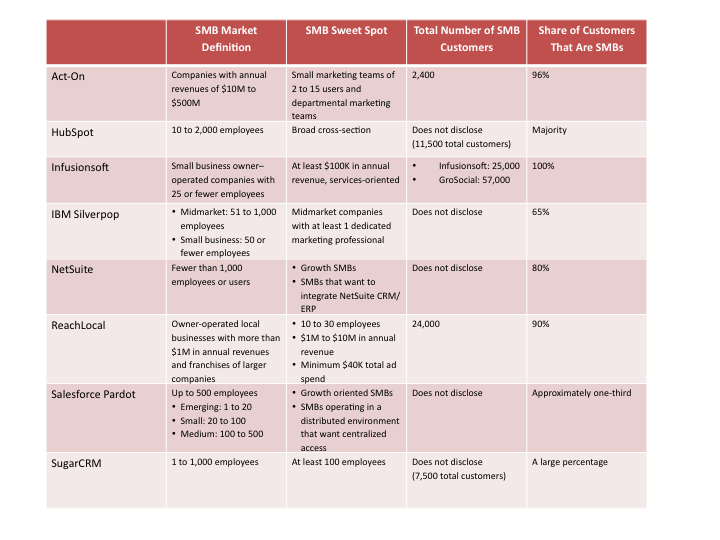This is the third post in a blog series discussing key marketing automation trends for SMBs. This series is excerpted from SMB Group’s December 2014 report, SMB Group Perspectives Report: Top Trends in Marketing Automation and How Vendors Are Helping SMBs to Capitalize on Them, which provides detailed information and insights to help SMBs capitalize on these trends.
Before small and medium businesses evaluate different marketing solutions, its important to understand how vendors define and target the “SMB market,” which is actually a term that has many definitions, depending upon who you ask.
We at the SMB Group define small businesses as those with fewer than 100 employees, and medium businesses as those with 100-999 employees. Meanwhile, the U.S. Small Business Administration defines a small business as having 500 or fewer employees, and has no standard definition for medium businesses.
Among marketing automation and CRM vendors, several tend to view the SMB size range similarly to the SMB Group definition of up to 1,000 employees. But some rely more on revenues to define their SMB niche. In addition, vendors’ market focus varies significantly. For instance, Infusionsoft concentrates on very small, owner-operated business with less than 25 employees, while IBM focuses on what it defines as midmarket companies, those with 51 to 1,000 employees and at least one dedicated marketing professional.
Figure 1: How Technology Vendors Define and Represent Themselves in the SMB Market
Source: SMB Group, 2014
This diversity reflects the very heterogeneous nature and requirements of what is actually a very fragmented SMB market. Small and medium businesses should scrutinize how vendors define and position themselves because different types of SMBs often require very different marketing, sales, solutions and services.
Vendors usually focus on a particular slice of the SMB market because it’s difficult to satisfy the diverse requirements of the broader market. In addition, SMBs should consider how big a footprint a given vendor has in the segment of the market the vendor is targeting—in terms of both the number and the percentage of its customers that are in that segment. Again, this is a good indicator of both vendor commitment to a given SMB segment and its ability to serve those types of SMBs.
For more information about the full report, SMB Group Perspectives Report: Top Trends in Marketing Automation and How Vendors Are Helping SMBs to Capitalize on Them, please contact Lisa Lincoln, Director, Client Services & Business Development: 508.734.5658 or lisa.lincoln70@smb-gr.com.

